“This may sound pretty obvious, but we only have 4 limbs. So, as a drummer this means the most drum elements we can play at any one time is 4”: How to think like a human drummer when building software beats
Ditch the repetitive loops and unlock more dynamic rhythms

DRUMS WEEK 2025: Drum kit instrument plugins are a wonderful thing, providing a vast array of realistic kit sounds and behaviours that you can use both with MIDI drum kit controllers or simply by programming in your DAW. They usually incorporate a MIDI pattern library, providing a great source of instant beats and fills.
However, if you want something a bit more specific, there’s no reason why you can’t program realistic parts from scratch. So whether you’re an okay drummer (like me) who wants to create more tricky parts they’d struggle to play, or a producer looking to create more realistic drum tracks, then read on as we take a look at some tips to get things moving.
Think like a drummer
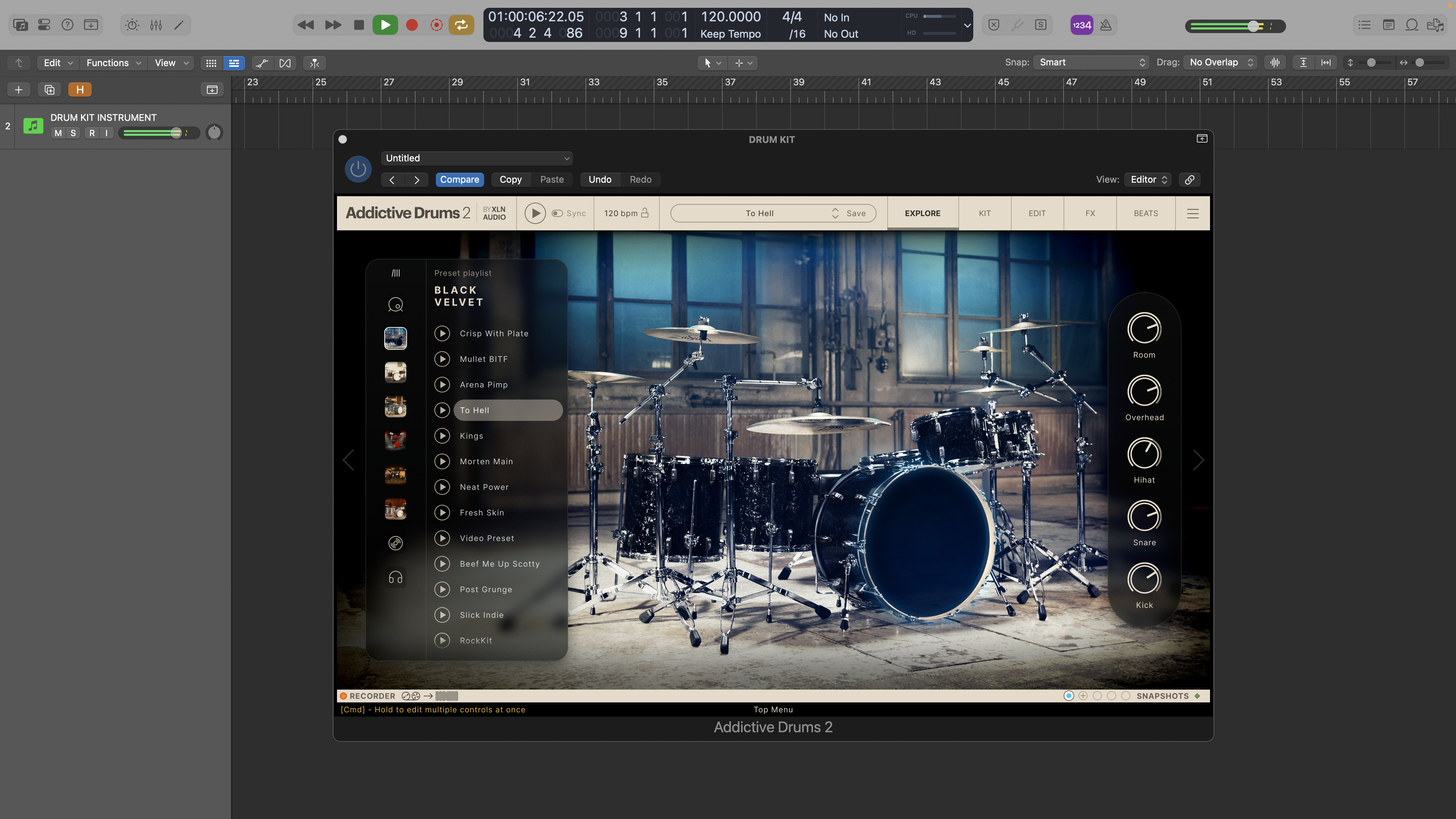
1: This may sound pretty obvious, but we only have 4 limbs. So, as a drummer this means the most drum elements we can play at any one time is 4. Not only that, but 2 of those limbs can only play kick and hi hat foot pedal sounds, adding further limits to the kit pieces you can use simultaneously. So, when programming parts take into account these physical limitations and behaviours.
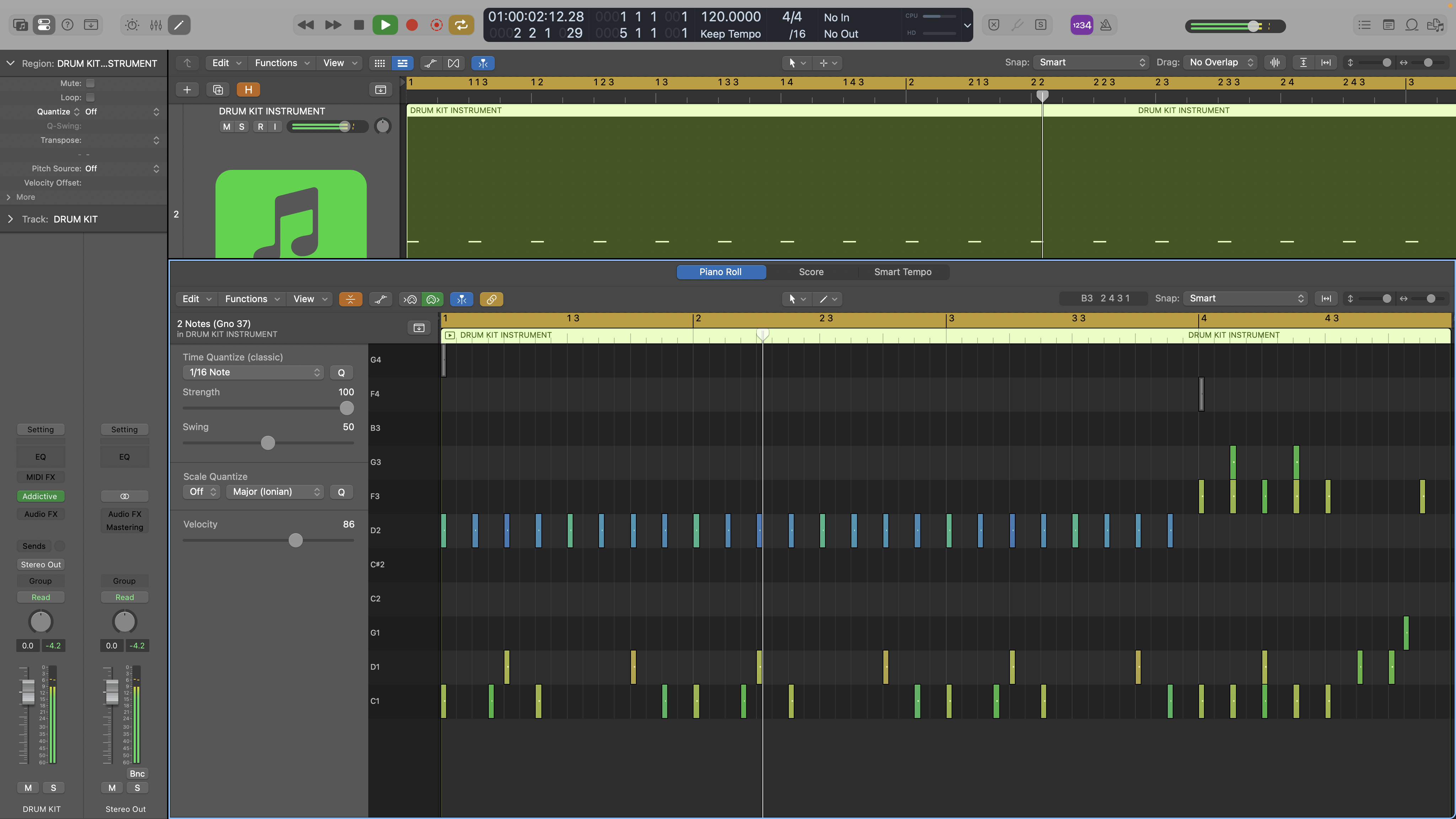
2: To give this some context, here we have a basic drum beat and you’ll see that for most of the pattern the kit pieces play individually or 2 at a time. Throw in a fill at bar 4 and briefly we’re playing 3 kit pieces simultaneously. There’s clearly not loads of drums playing together at any point.
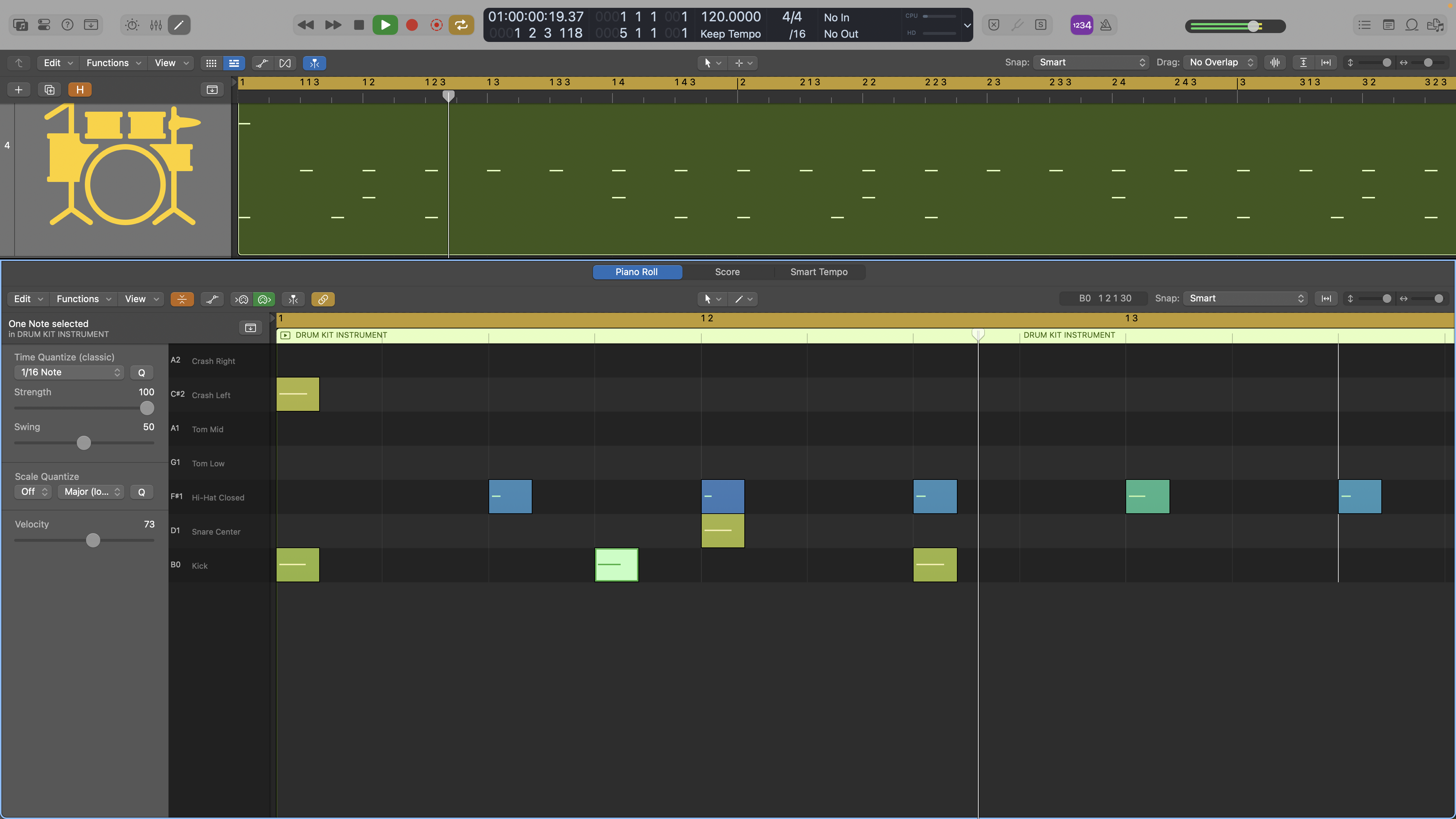
3: This concept follows through into other aspects and a good example is crashes. Most drummers hitting a crash on the downbeat will use their hi hat hand and then move to the hi hats for the next hit. Here you can see this in the piano roll editor as the hi hat doesn’t play the downbeat.
Understanding your kit instrument
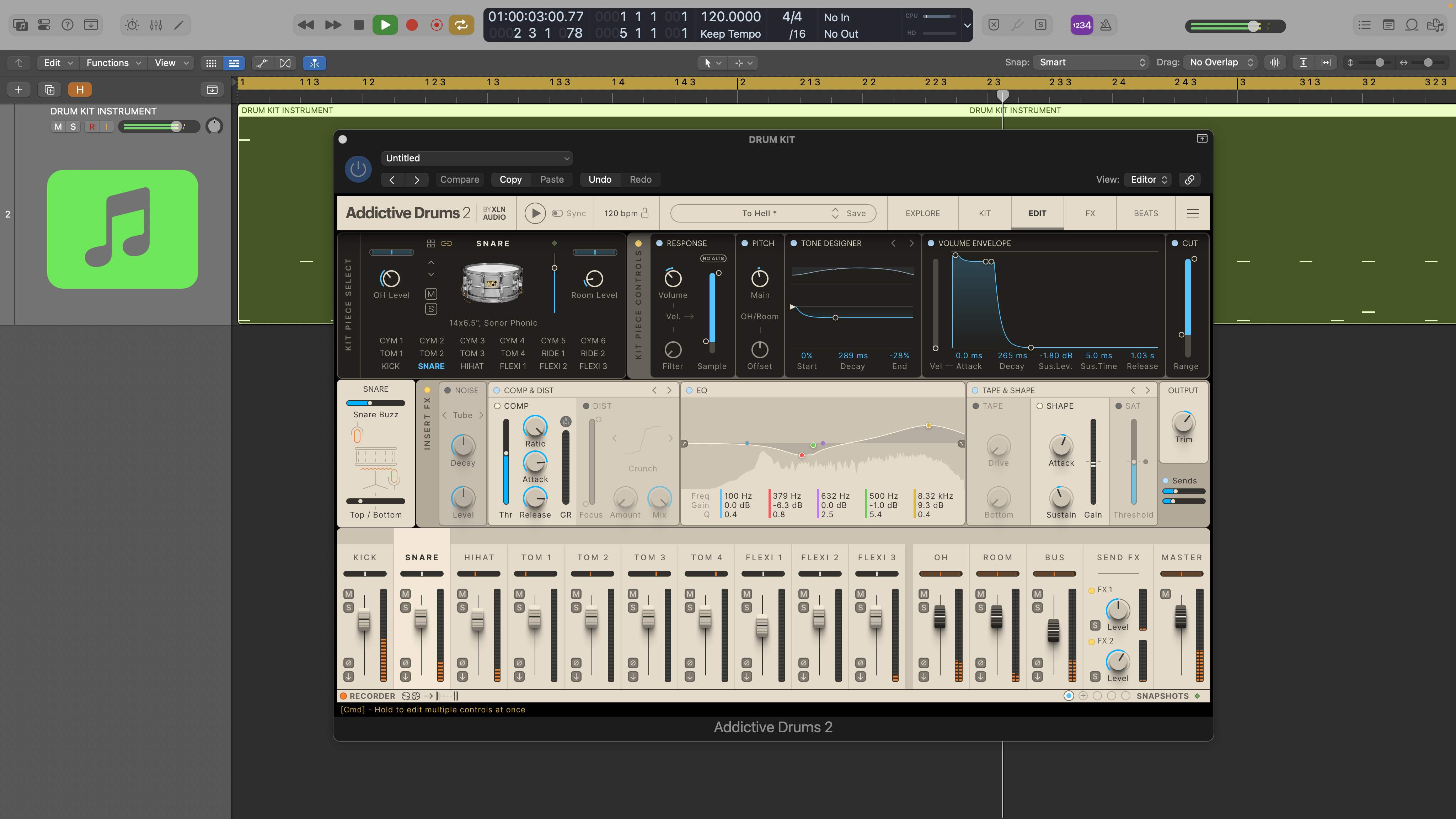
4: One reason drum kit instruments are so much better than bare samples is that they’re designed to include all the aspects of a multimiked kit, including close and distant mics, bleed between kit pieces and some variation (humanisation) in hits. However, they also often allow you to change these settings in ways that wouldn’t match a real kit.
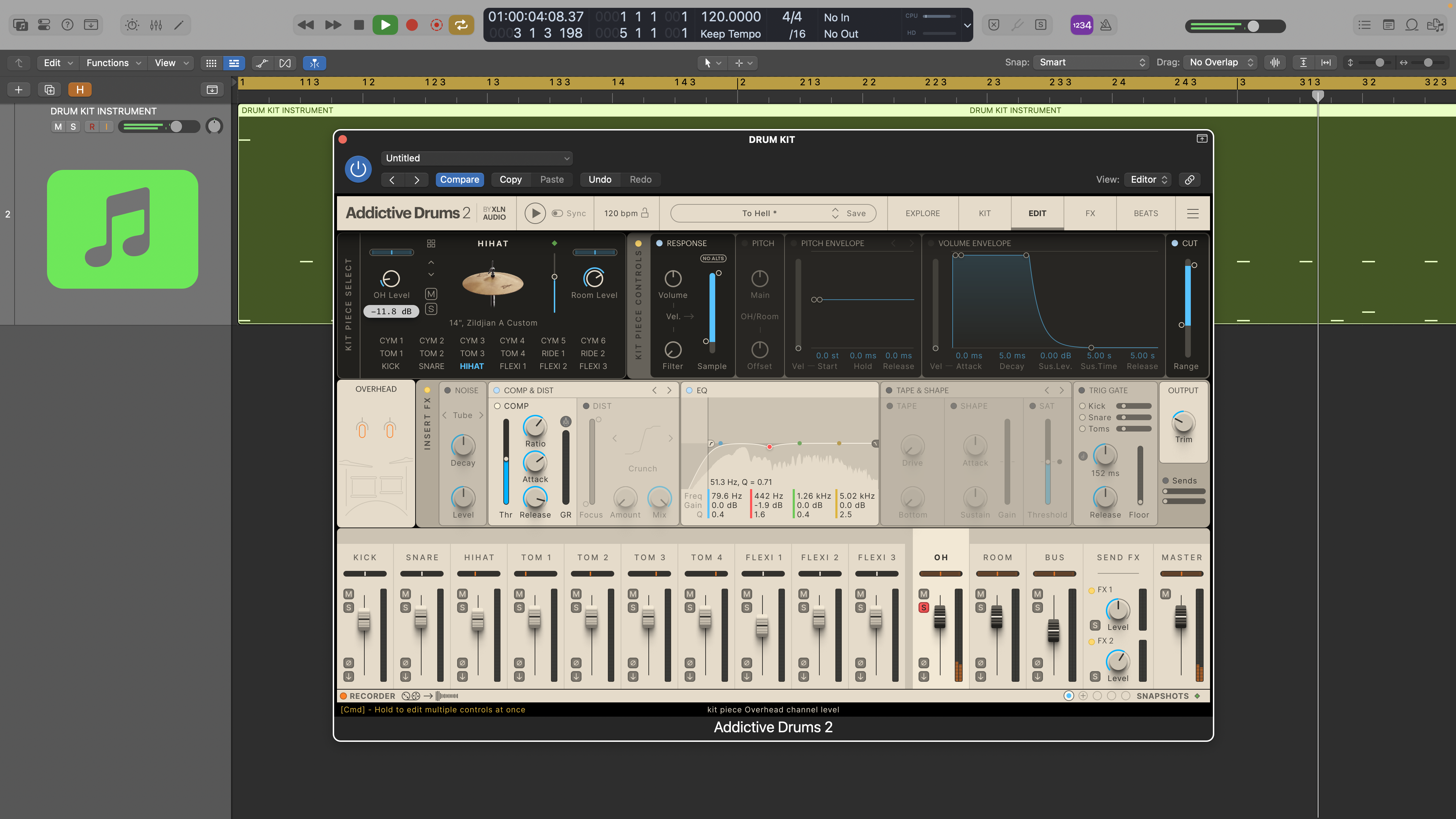
5. For realistic parts it's important to retain some of this, or at least if you do change things have a valid reason. Here in Addictive Drums 2 for example, you can adjust the bleed level of individual kit pieces into the room and overheads. This can really help finesse the balance in these components. Here we’ve substantially reduced the hi hat level in the overheads.
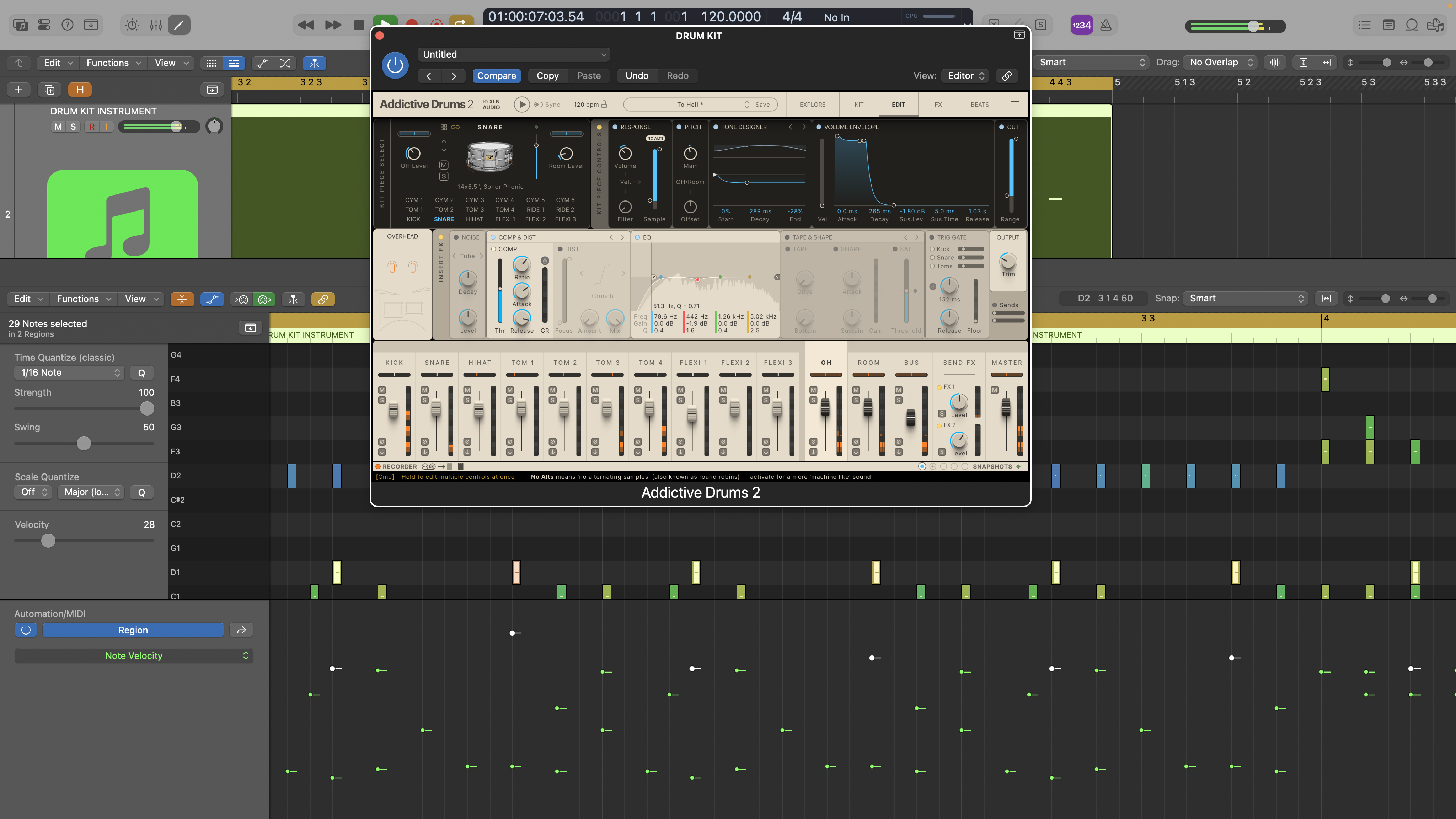
6: The humanisation aspects of a drum kit instrument are also worth considering. For the most part these work well, but can sometimes be a bit too random or include obviously repetitive round robin implementation for example. Here we have activated the ‘No Alternating Samples’ option for the snare and used velocity to periodically change the timbre of strategic hits.
Want all the hottest music and gear news, reviews, deals, features and more, direct to your inbox? Sign up here.
Focus on the hats
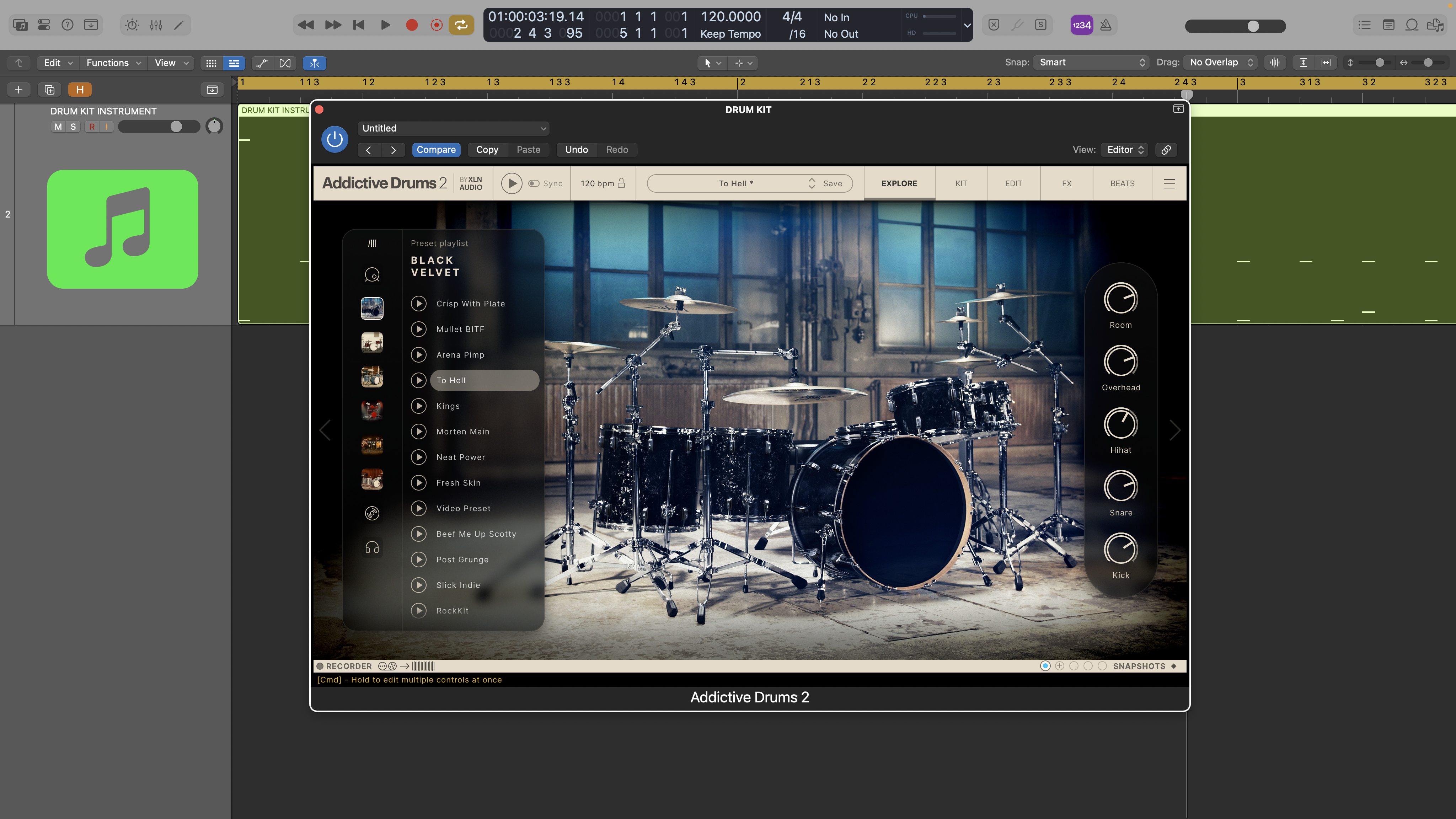
7: Drums are quite a physical instrument to play, and hitting things means you really feel the pulse of the music. This inevitably feeds through into the way you hit things and in particular hi hats and rides, creating natural accenting and dynamics.

8: One fast track route to making your kit parts more realistic is to build this concept into your programming. In this example the beat is very straight and we’re using higher velocity on the hi hat part to accent the kick and snare hits, just as a drummer would.
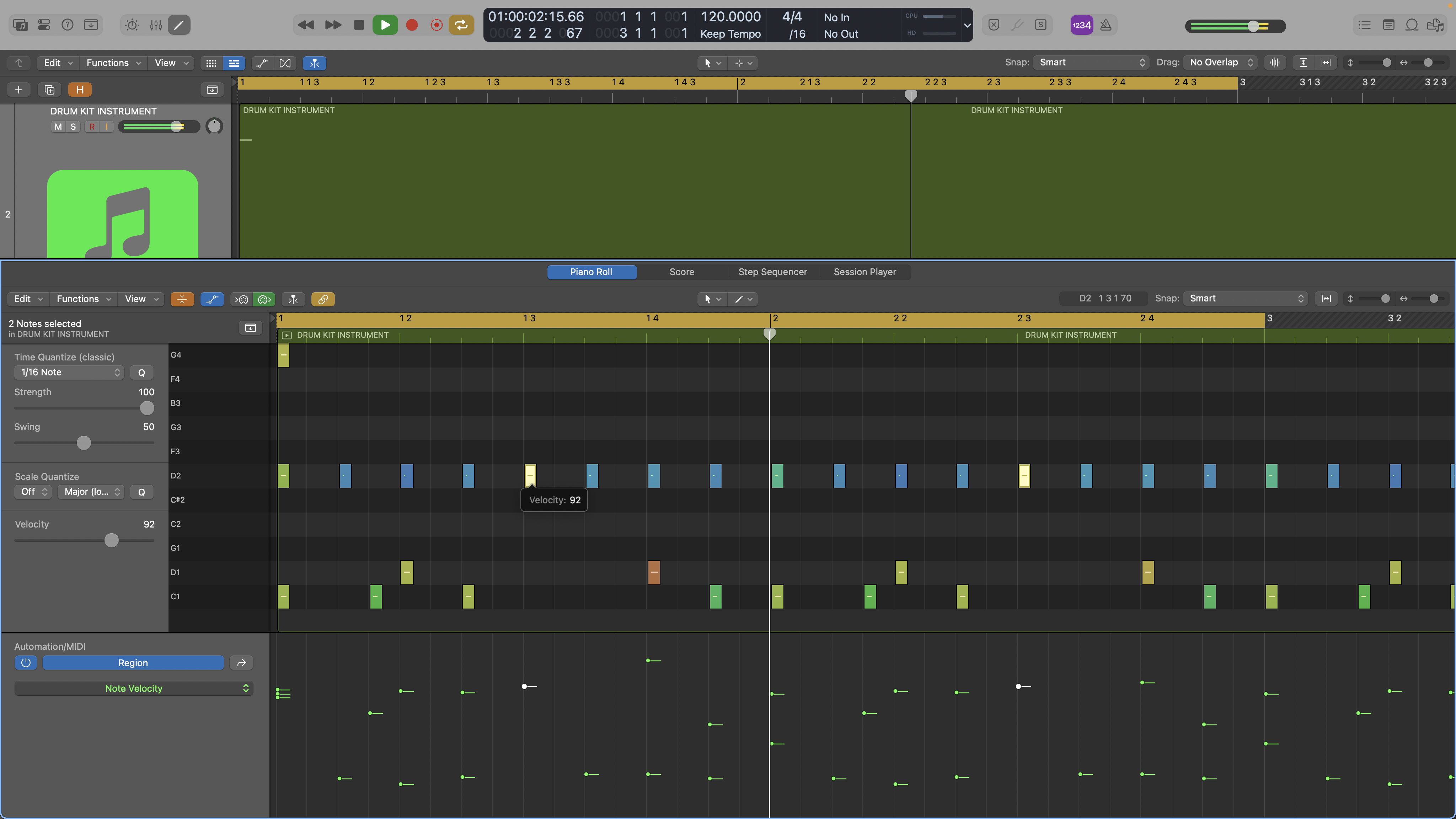
9: For patterns where the kick and snare don’t fall consistently on beats, we can use the hi hats to continue to mark the pulse of the music or divisions of that pulse. Here rather than accent each quarter note we’re accenting just beats 1 and 3.
Timing
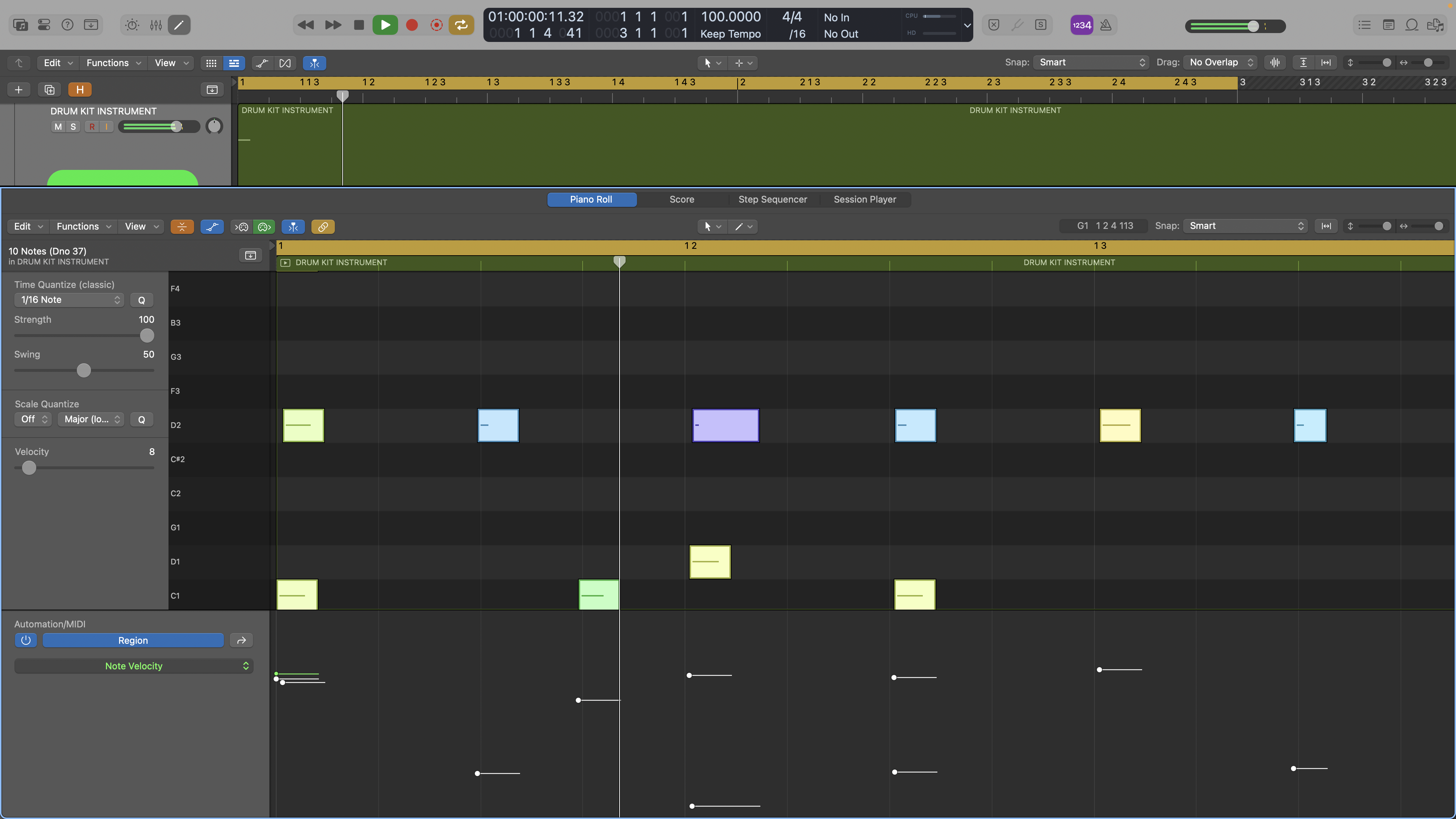
10: Finally, real drumming is not quantized or even swing quantized, and although we may record to a click and even push the performance towards a quantize grid, we still want movement in the playing. To create realistic parts it’s important to factor this in, and even if you opt to quantize some of the quarter notes, building some feel elsewhere is vital.
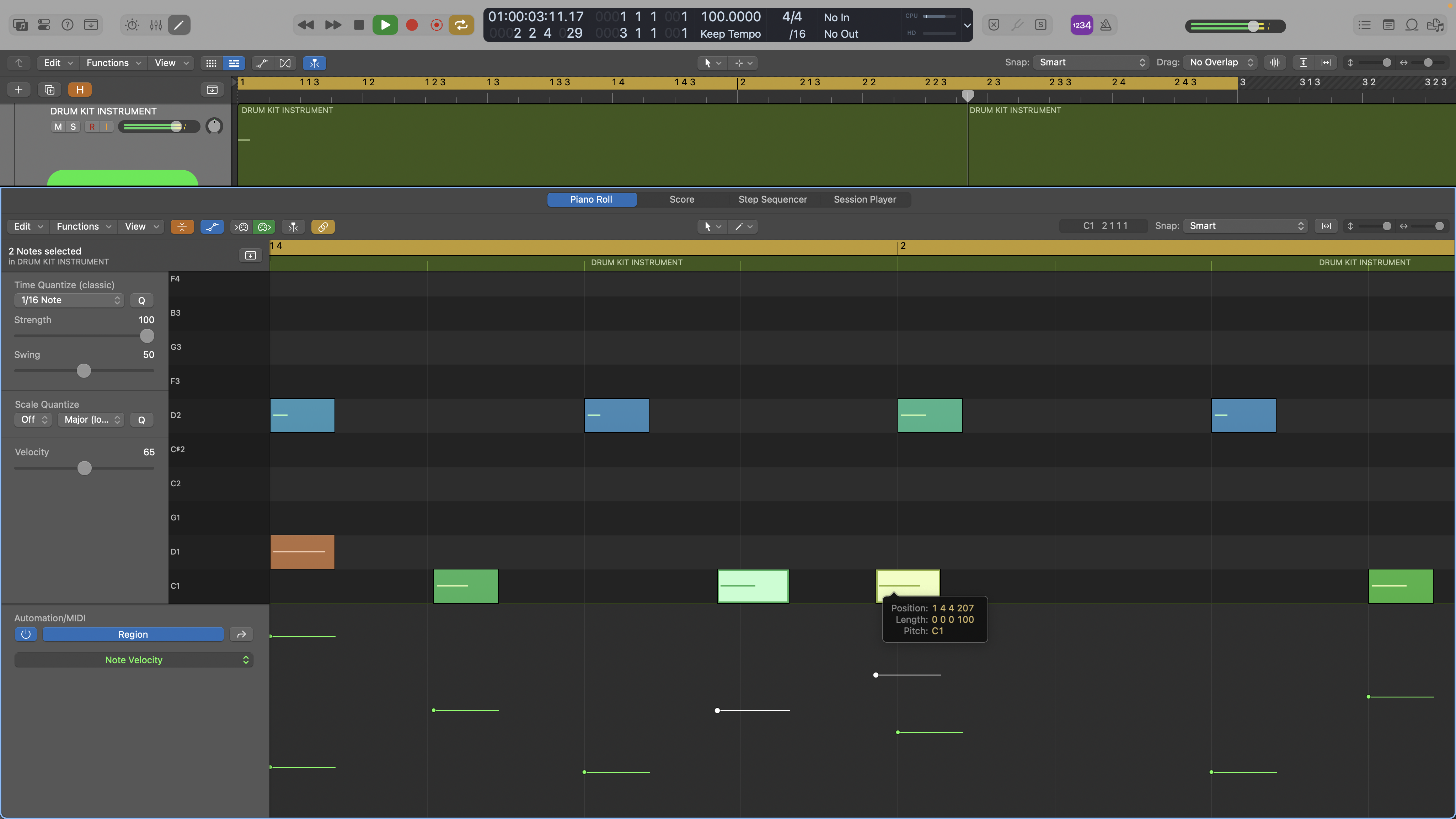
11: The kick drum is responsible for much of the feel in a drum part, particularly if it’s playing grace notes. Playing with the timing of these 16ths and the immediate quarter note that follows can create a beat that either pushes or pulls. Here we’ve pushed both the 16th grace note and downbeat slightly earlier.

12: For snares even if the backbeat is tightly quantized we can add feel using ghost notes. Here our beat has 8th note hi hats, but adding in a 16th note snare ghost note on the second 16th of each bar creates more feel. We’ve used a very low velocity to make this hit super quiet. Try adding more ghost notes to taste.
Jon is a London based platinum award winning mixer, producer, composer and club remixer with a diverse CV that spans dance, pop, rock and music for media. He’s also a long term contributor to MusicRadar's music technology tutorials and reviews. Whether working alone or collaborating he usually handles final mixdowns, so you’ll also find MusicRadar peppered with his handy mixing tips.
You must confirm your public display name before commenting
Please logout and then login again, you will then be prompted to enter your display name.
